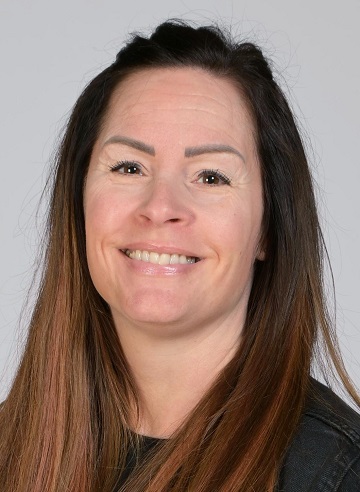Safeguarding
SAFEGUARDING AT HAREFIELD PRIMARY SCHOOL
If you have a safeguarding concern, please call the school on 02380 463240 OR email info@hpslive.net and ask for a DSL.
Harefield Primary School believes that a child or young person should never experience abuse of any kind. We have a responsibility to promote the welfare of all children and young people and to keep them safe. We are committed to practice in a way that protects them.
We recognise our moral and statutory responsibility to safeguard and promote the welfare of all children. We make every effort to provide a safe and welcoming environment underpinned by a culture of openness where both children and adults feel secure, able to talk and believe that they are being listened to. We maintain an attitude of “it could happen here” where safeguarding is concerned.
DSL's can be contacted via the main school telephone number 02380463240.
OUR DESIGNATED SAFEGUARDING LEAD (DSL) IS: SIAN CARR (HEADTEACHER)

OUR DEPUTY SAFEGUARDING OFFICERS (DSOs) ARE: EMMA MILLARD (DEPUTY HEAD)

TRACY C (FAMILY SUPPORT WORKER)

OUR SAFEGUARDING GOVERNANCE COMES FROM: RUTH DAVIES (HAMWIC EDUCATION TRUST BOARD)

Please refer to our Child Protection and Safeguarding Policy
The purpose of this policy is to: -
- provide staff, volunteers and governance with the framework they need in order to keep children safe and secure in our school and to inform parents and guardians how we will safeguard their children whilst they are in our care.
- protect children and young people who attend Harefield Primary School
- ensure consistent good practice across the school.
- demonstrate our commitment to protecting children.
Our commitment to safeguarding
We will seek to keep children and young people safe by:
- Valuing them, listening to and respecting them
- Appointing a Designated Safeguarding Lead (DSL), for children and young people, Deputies and Safeguarding Governance
- Adopting child protection and safeguarding practices through procedures and code of conduct for staff and volunteers (See our Code of conduct policy for more information)
- Developing and implementing an effective e-safety policy and related procedures
- Providing effective management for staff and volunteers through supervision, support, training and quality assurance measures
- Recruiting staff and volunteers safely, ensuring all necessary checks are made
- Recording and storing information professionally and securely, and sharing information about safeguarding and good practice with children, their families, staff and volunteers via leaflets, posters, one to one discussions
- Using our safeguarding procedures to share concerns and relevant information with agencies who need to know, and involving children, young people, parents, families and carers appropriately
- Using our procedures to manage allegations against staff and volunteers appropriately
- Creating and maintaining an anti-bullying environment and ensuring that we have a policy and procedure to help us deal effectively with any bullying that does arise
- Ensuring that we have effective complaints and whistleblowing measures in place
- Ensuring we provide a safe physical environment for our children, young people, staff and volunteers, by applying health and safety measures in accordance with the law and regulatory guidance
How to Report Safeguarding Concerns
If you have any safeguarding concerns about a child you must report them.
If you believe the child is in immediate danger, don’t delay. Call the police on 999 straight away. Furthermore, under the Female Genital Mutilation Act 2003, you must call the police if you are informed that a girl under 18 has undergone FGM.
You can also report concerns in the following ways:
- Contact NSPCC on 0808 800 5000. They will then pass the concern onto the local child protection team who will investigate it.
- Report your concern directly to your Children's Resource Services Tel: 023 80 833336 (Public Number) or find out more here.
- Report it to Designated Safeguarding Officers
- Call the NSPCC’s Whistleblowing advice line on 0800 028 0285 or email them on help@nspcc.org.uk. They offer free advice and support to anyone who’s concerned about how child protection issues are handled in an organisation.
Safeguarding Children Walking to and From school
There are no laws around age or distance of walking to school. A families' guide to the law states:
“There is no law prohibiting children from being out on their own at any age. It is a matter of judgement for parents to decide when children can play out on their own, walk to the shops or school."
Parents are legally obliged to ensure their children get to school and attend regularly, but this in itself does not disallow independent travel. However, as a school we are responsible for the welfare of our pupils and therefore have to consider what we believe is good practice in ensuring the safety of our pupils. We also have an obligation to alert relevant authorities should we believe a child’s welfare is at risk.
Pupils in Foundation Stage or KS1
Our agreed school policy is that no pupil in Foundation Stage or Key Stage 1 should walk to or from school on his or her own or be left on their own on the school premises either before or after school. In addition, we will only hand over pupils to named adults or older siblings provided they are of secondary school age or above (however, if the professional judgement of the adult at school deems the older sibling not to be suitable, they will not hand the child over).
Pupils will not be handed over to other adults unless the school has been informed by the parent/carer that they have made this arrangement. We also ask that you keep us informed of any changes in arrangements, preferably by letter. If someone turns up to collect your child and we have not been notified, the adult will have to wait until we have verified his or her identity. If no one turns up to collect a child in these year groups, they will be kept in school and parents contacted. If the child is not collected and we have failed to make contact with the child’s parent/carer, we will consult with family services. We will not allow older brothers or sisters in school to collect younger siblings.
Pupils in KS2 (Years 3, 4, 5 and 6)
While there is no set age when children are ready to walk to school or home on their own, we believe that pupils in Year 3 and 4, should be still brought to and collected from school and this is our school policy. Therefore, as regards pupils in Years 5 & 6, we believe that you as parents/carers need to decide whether your child is ready for the responsibility of walking to and from school alone.
In deciding whether your child is ready to walk to school you should assess any risks associated with the route and your child’s confidence. Work with your children to build up their independence while walking to school through route finding, road safety skills and general awareness. There are many ways you can prepare your child to make an independent journey. Children who are driven to school do not have the opportunity to develop road awareness and are therefore more vulnerable when they start to walk to school independently.
Walking to school is a great opportunity to learn road safety skills. The best way to do this is to walk with your children from a young age, teaching them about crossing the road, learning how to navigate and a host of other skills. This helps them gain the experience and confidence to deal with traffic and way finding on their own, in preparation for walking with friends or alone when they are older.
Teach your child to:
- Pay attention to traffic at all times when crossing the street; never become distracted.
- Always cross at the intersection where there are traffic lights; do not cross in the middle of the road. Alternatively cross in a place where you can see clearly in all directions. Avoid parked cards or bends in the road.
- Look both ways before crossing; listen for traffic coming; cross while keeping an eye on traffic.
- Look out for cyclists.
- Remember that drivers may not see them, even if they can see the driver.
- Remember that it is hard to judge the speed of a car so be cautious.
- Never, ever, follow someone who is either a stranger or someone they know but is not a designated "safe" adult. Speak to your child about what they should do if this should ever happen.
When deciding whether your child is ready for this responsibility you might want to consider the following:
1. Do you trust them to walk straight home?
2. Do you trust them to behave sensibly when with a friend?
3. Are they road safety aware?
4. Would they know what to do if a stranger approaches them?
5. Would they have the confidence to refuse to do what a stranger asked?
6. Would they know the best action to take if a stranger tried to make them do something they did not want to do?
7. Would they know what to do if they needed help?
8. Would they know whom best to approach to get help?
If you are confident that your child is ready for the responsibility of walking to or from school alone you may wish to consider them bringing in a personal mobile phone as an additional safeguarding measure. Pupils must adhere to the mobile phone policy, the code of conduct/agreement and have parent/carer permission (please see below).
If you are not confident about how your child would react then you should seriously consider whether you should allow them to walk on its own. If you decide that your child is ready for this responsibility then you must inform the school by letter or by completing the slip below. Your child will be prevented from walking home unless this permission has been given in writing.
Your child will also be responsible for their behaviour whilst on the school premises before or after school. Should their behaviour not be acceptable you will be asked to accompany them or collect them until they have proved they can meet the school's expectations.
We will not allow children to walk home alone in the dark. Please bear in mind that if they are attending an after school club or event it may be dark when the club finishes.
Where children walk to, or walk home from school, alone, we would usually expect that a parent, or other responsible person, is at home when they leave or arrive. If the child will be leaving from, or returning to, an empty house, we would expect that this is only for a short period of time and that the child knows how, and can, access emergency adult support if needed.
IF AT ANY TIME YOU NEED TO CHANGE ARRANGEMENTS YOU HAVE MADE PLEASE ENSURE YOU LET US KNOW IN WRITING IMMEDIATELY.
